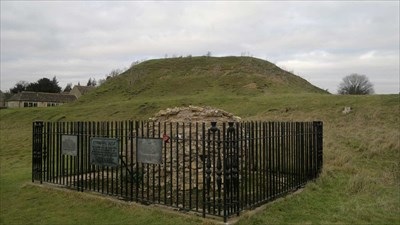
Visitors to Fotheringhay Castle will have been drawn to the one remaining piece of stonework which is still visible. The Fotheringhay Castle wall remnant is surrounded by an iron railing and there are several historic plaques.
I stumbled across the background to this preserved lump of masonry in a newspaper article from July 1911, whilst researching our house history. The article was written by editor of the Peterborough Advertiser, a Mr Frank Loomes – who was a keen amateur archaeologist, and also a former resident of our house in Eastfield Road. To prove that this was a remnant of the castle had been a pet project of his for many years and he was finally able to announce his achievement to the world.
As well as explaining how the “lump” of Fotheringhay keep wall came to be there, the article is a nice reminder of the keen interest taken in archaeology by many at the time. The hyperbole, the deference to the local dignitaries, the blatant self-interview with the “Hon Secretary”, the fund raising message, and the proud portrait of the author are also of note!
Rex Gibson
This story was published in the Peterborough Advertiser on 22nd July 1911.
[Subscribers to the British Newspaper Archive can find the article in its original form]
Fine Find at Fotheringhay
OUTER WALL OF CASTLE KEEP UNEARTHED
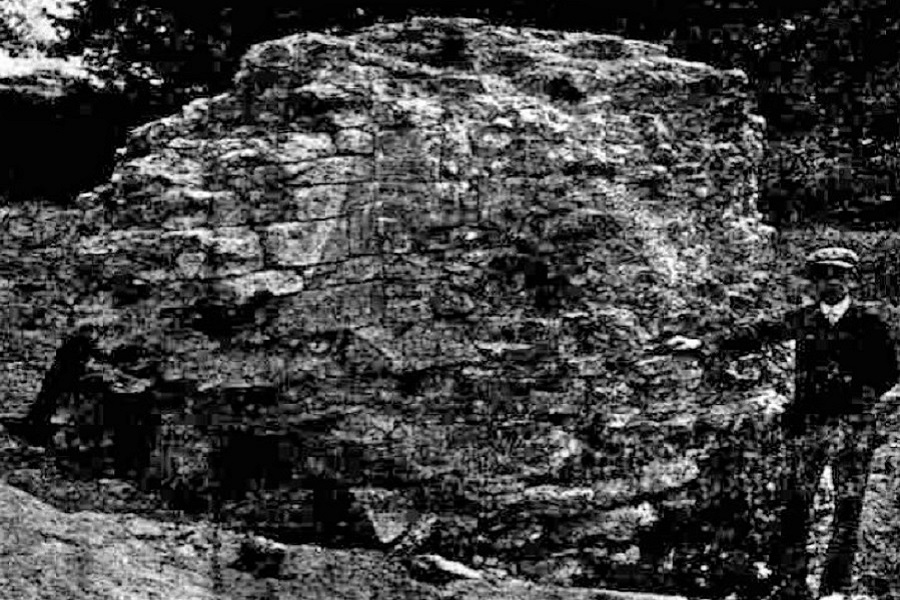
MONDAY’S DISCOVERY AT FOTHERINGHAY: SHOWING THE COURSES OF BARNACK RAGSTONE AND THE ANGLE IN THE WALL WHERE THE KEEP OF THE CASTLE IS BELIEVED TO HAVE JOINED A SOUTHERN TOWER. THIS WALL OF WORKED STONE FROM THE CASTLE KEEP HAS BEEN BURIED FACE DOWNWARDS SINCE THE DISSOLUTION OF THE CASTLE, circa 1630, AND WAS RESTORED TO ITS VERTICAL POSITION AS PHOTOGRAPHED ON MONDAY, PREPARATORY TO BEING ENCLOSED BY A LIGHT RAILING FOR PRESERVATION FOR POSTERITY. THE YOUTH IS FIVE FEET HIGH.
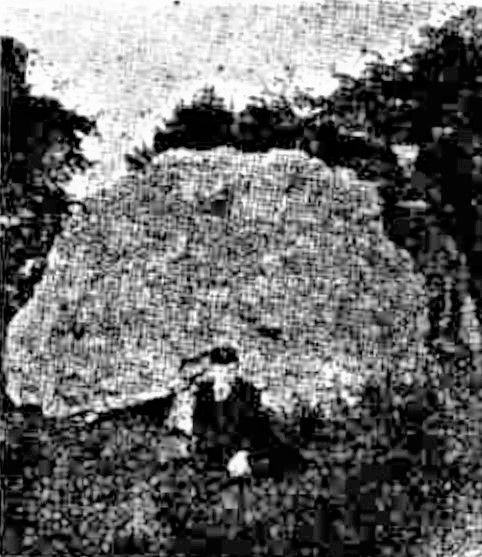
THE “SHAPELESS MASS OF CONCRETE,” THE ONLY RELIC OF FOTHERINGHAY CASTLE AS IT APPEARED UP TO MONDAY LAST. THE SIDE HERE SEEN IS NOW AT THE TOP, AND THE CASTLE WALL AND INWARD CORNER AND PLINTH OF DRESSED STONE DISCOVERED ON THE UNDER SIDE, HAVE BEEN EXPOSED TO VIEW AS SEEN IN THE ABOVE [other] PHOTOGRAPH.
A WELCOME SURPRISE!
Buried for Three Hundred and Fifty YearsAND NOW ONCE AGAIN SEEN
A Society’s Grand and Successful Task
350 years have elapsed since the great mass of outside walling of the noble Keep on the mound of Fotheringhay Castle was seen by mortal eye! For 350 years has a portion lain far down in the verdant pasture of the Castle’s tragic site at a spot bordering the meandering and rush-bound Nene, whilst the antiquarian world mourned that not a skerrick of the Castle walls remained to tell its tale and point its architectural features. True, a “shapeless mass” sturdy concrete was there – the only relic ‘twas thought, but which told no tale nor echoed no “sermon in stone”; was treasured merely as the only legendary piece the dread Castle where, alas was spilled in other and more cryptic days
The blood of beauty, wealth, and power,
The heart-blood of a Queen,
The noblest of the Stuart race.
The fairest earth had seen.
And as such, a national relic! Towards the preservation of this on purely antiquarian grounds remote from any personal or religious contentions for or against, the Peterborough Archaeological Society under influential patronage and support stood committed. Their work was to place a light railing around the relic. Dr Cane was the first Chairman of the Committee, and was succeeded by Mr G C W Fitzwilliam, with Mr. Frank Loomes as secretary. Amongst the subscribers to the railing Fund are Lady Wantage (the owner of Fotheringhay), Hon N C Rothschild, Mr Geo C W (President of the Committee), Earl Spencer, the late Earl Carysfort, Lord Lilford, Mr Leonard Brassey, MP, Dr Walker, Mr J H Beeby (Chairman of Peterborough Bench), und a host of others. Lady Wantage, Mr W E Southam (the tenant of the Farm on which the Castle stood) and Mr Dickson (Lady Wantage’s Agent), gave every facility for carrying out the Society’s intentions.
From the first there had been a rooted belief in the mind of the Hon Secretary that the sunken stonework raised would reveal a portion of the wall of the Castle Keep and, for years insisted upon this view and himself made private examinations with corroborative results. Upon his initiative the Committee decided to make drastic examination.
This was done on Monday, the presence of the Committee’s Architect, Mr. Alan Ruddle, and after ten hours’ strenuous labour by the contractor’s men (Mr Spencer, of Elton). The Hon Secretary’s forecast was more than confirmed.
The “shapeless” concrete mass was found to be simply the backing of a liberal breadth of worked Barnack ragstone including a more or less obtuse angle with plinth complete. And more than this, it was such that it fitted exactly into what can be imagined to be the design of the fetterlock Castle Keep as it joined the southern tower! This discovery gave the warmest satisfaction to the handful of experts and critics.
The antiquaries then proceeded gently and almost lovingly to raise those 20 tons of stone to the same vertical position as in the original building in days not far from Edward III (by the son of whom the Castle was re-built!). It was triumph of diligent, patient work, and the ancient stonework now becomes a thing that tells its own story volubly and for the first time for 350 years morel There is now a magnetism in the Fotheringhay relic never possessed since the days of James I, when the castle was dissolved! When the historic mass of stone – now appearing bigger than ever – has been allowed to settle, the concreting and enrailment will proceed. It is one of the finest strokes any Archaeological Society has done in the way elucidating and ennobling a national relic within its charge, and the greatest credit is due to Mr Ruddle, the architect, Mr. Fitzwilliam, to the insistent Hon. Secretary and others for the personal interest they have shown and for the triumph they have this week unitedly achieved.
Our photos show the ‘’shapeless mass” as it was and the substantial walling and angle as now it appears. The larger picture taken the day following by Mr Wright, of Oundle.
How the Discovery Came About!
“Well, it is simple to tell how it came about,” said Hon Secretary Loomes. “I was for years convinced in looking at the mass of crude concrete, all higgledy-piggledy so the stone in its old position revealed, that it was the backing of a wall and that the smooth corners of the wall itself would be found on the underside that was sunk in the ground.”
“And this fact you thought important?”
“Decidedly. As soon as I mentioned it to my committee they saw the reasonableness of my suggestion, and unanimously decided that, when funds came in, and with Lady Wantage’s sanction the mass should be lifted, and the walling shown in its normal position before enrailment.”
“And why was this so important?”
“From an archaeological standpoint it was everything. One
criticism I had to meet in soliciting funds for the work was from an influential member of a County Society, Mr Christopher Markham, FSA of Northampton, an authority whose opinion none can afford to despise. He went so far as in June of 1909 to address the Architectural and Archaeological Societies of the Archdeaconries of Northampton and Oakham against the preservation of the Relic “as the block of granite was a shapeless mass, without any architectural features of any kind and was PROBABLY ONLY PART OF THE FOUNDATION”! If true, I admit that was a powerful argument for not spending much money in its preservation.”
“How did you meet that objection?”
“Briefly enough. By a direct negative. It so happened that in furthering my belief that the actual outside dressed stone walling of the Castle should be found underneath, I had done a little excavating quietly on my own. Rabbits had considerably assisted me by burrowing. I saw undeniable evidence of the walling but not only walling but of an angle in that walling – an inward angle. I placed the matter before the Relic Preservation Committee of which Mr G C W Fitzwilliam, DL, is President and they realised the discovery was of the highest value. Accordingly, I wrote Mr Markham stating the result of our further examination and our emphatic belief in the stone possessing every evidence of ‘architectural features,’ indeed ‘that from the contour of the dressed stone, and the fomidableness of the concrete stuffing, the Relic confirms in a remarkable manner the tradition, universally accepted, that it rolled from the Keep and that the angle of the masonry may be found to fit exactly into the design of a fetterlock which history tells us was the form of the Keep of Fotheringhay Castle. ‘”
“And this on Monday you found to be precisely the case?”
“Precisely, the discovery more than confirmed our wildest anticipations. Not only did we find a run of faced stone – obviously the outer walling as well as a splendidly defined angle of the walling, but what we had not reckoned on finding, a portion of the angle plinth of the Castle Keep in position in the masonry.”
“Your architect confirms that?”
“Absolutely, he was more than delighted. He considered it the most important archaeological discovery of its kind in recent years. What makes it more so is that is that we have now before us for the first time for 350 years a portion of the actual exterior wall of the Castle Keep – which eyes had not seen for that long period. From it we may in mind almost reconstruct the lower portion of the Castle Keep concerning which there is no other indication either in plan or in stone!”
“You shifted the stone on Monday?”
“Well, we simply righted the position. We leave it on the very spot to which it rolled on the Nene-side, but that which was the side of the ‘shapeless mass’ is now the top. The courses of stone are now to be seen in their natural position and the portion of the angle of the Castle Keep is practically as it was in the days of its erection possibly in the Twelfth Century, or beyond.”
“It looks like a bit of Castle now?”
“As you say, it is something like a Castle wall now – which it never was before! If we did nothing more the Society has rendered the greatest service to history and to national archaeology.”
“But you intend to do more?”
“Quite so; it is more than ever necessary that this magnificent relic should be preserved to posterity. It will be lightly and elegantly railed about – partly to ward off the hammer of relic hunters.”
“For which you have funds in hand?”
“We have funds, though alas not enough; but up the railing will go and we shall have to do a bit more begging.”
“You have had no difficulty in the work which has led to this magnificent discovery?”
“Everyone has been most kind, especially the popular tenant of the farm, Mr W E Southam and his practical wife. Lady Wantage and Mr Dickson, her shrewd agent, have helped us with funds and with licence to pursue our operations most generously, and subscriptions, though a little bit tardy in coming in, have been led by substantial donations from the late Earl Carysfort, the present and late Earl Spencer, Lord Lilford, Hon N C Rothschild, Mr Leonard Brassey, MP, Dr Walker, and many others.”
“Who probably will not see you stuck for a pound or two more now that you have unearthed such a magnificent surprise!”
“Well, I am against working to much the willing horse; they have been really good to us and I would rather have the smaller subscriptions of the many. You see we have now something tangible to preserve! That’s the point that should assist the flow of donations.”
“The Treasurer?”
“Ah! Good idea. The Hon Treasurer is Mr C H Meldram, Manager of the National Provincial Bank, Peterborough, who will gratefully acknowledge Subscriptions for the Fotheringhay Castle Stone Preservation Fund.”
The Castle History
Few places in England are more connected with national history than Fotheringhay. No pictorial record of the Castle exists but we know that at the time of the Norman Conquest the place was associated with the Judith, the niece of William the Conqueror, and with Waltheof, the greatest Englishman of the time.
Fotheringhay then passed through the marriage of Waltheof’s daughter, into the possession of the Kings of Scotland.
In the thirteenth century it belonged to the Baliols, and Baliol College at Oxford was founded from it, the first Master of that college being a lad born at Fotheringhay. When the disputed claim to the Scottish Crown resulted in war between Scotland and England, Fotheringhay was taken as a possession of the English Crown, and granted to a nephew of Edward I, whose grand-daughter, Mary of Valence, spent there a widowhood of more than fifty years.
On her death, in the reign of Edward III, the estate was granted to Edmund Langley, Duke of York. Under him the castle was rebuilt, and the old parish church turned into a Collegiate Church – that is a Church served by a corporate body of clergy.
From this time, Fotheringhay Castle became the chief residence of the House of York, and so played a great part in the Wars of the Roses. Edmund Langley’s son Edward was killed in the Battle of Agincourt, and his body was brought back from France to be buried at Fotheringhay.
His nephew Richard, Duke of York built the present Parish Church, and after his death at Wakefield, his son Edward IV brought the body to Fotheringhay to be buried with royal honours.
Richard’s wife, Cicely Neville, lived at Fotheringhay until her death in 1495. The Castle was then made the official residence of the Queen of England and so belonged in Henry VIII’s reign to Queen Katherine of Aragon. In Queen Mary’s reign it became a Royal Prison.
In 1573 Queen Elizabeth visited it and ordered several re-buildings, namely the bridge, and the tombs, still to be seen inside the Church. But what appeals most to public interest is the fact that, in 1586, after eighteen year of imprisonment in England, Mary Queen of Scots was sent to Fotheringhay to stand her trial for her alleged conspiracy against the life of Elizabeth, and that having been sentenced to death, she was on the 8th February, 1587, executed in the Castle Great Hall.
The story has been told over and over again. It is the subject of a brilliant though perverse piece of word-painting by Fronde, but that itself is not more impressive than the plain report drawn up by Cecil’s directions. Friend and foe are agreed on this at least – she played her part well. After dinner one day the commissioners desired to see her; it might have been to announce Elizabeth’s death and her accession; it was to say she must die next morning, and in a few hours all was over. “Done the morning of my death. Wed, Feb 8. MARIE R.” You can still see the beautiful, regular writing, not a trace of fear or sorrow there. And yet what a storm of passion raged beneath that calm, smiling masque: “her lips stirred up and down almost a quarter of an hour after the head was cut off.” Yes; but then the truly sovereign will was gone which kept every nerve in subjection. Two of the Stuarts gained their greatest victories in death. Of her grandson a Puritan poet wrote in words almost too familiar for quotation:
“He nothing common did or mean
Upon the memorable scene.”
They were at least as true of Mary. As old Brantome says: She died “vrayement reyne de France et d’Ecosse.” Was it a blunder as well as a crime? Was it a deed wise and necessary in itself and justified by results? Men have debated these points ever since, and today as keenly as ever. Elizabeth’s advisors at least never doubted the policy of it all. Perhaps the personal equation had something to do with that. Certain wise and reverend heads must have felt much more securely fixed on shoulders ever after. The sudden demise of the Queen and the unopposed succession of the other was probably a common form of nightmare among English statesmen of the period.
After the death of Mary, Fotheringhay remains interesting because of the circumstances under which her body remained there so long. It was buried at last on August 1st, 1587, in Peterborough Minster.
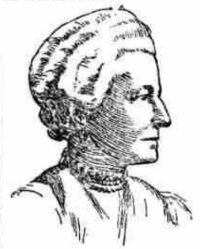
THE LADY WANTAGE. LADY OF THE MANOR OF FOTHERINGHAY, WHO IS GRACIOUSLY INTERESTING HERSELF IN THE PRESERVATIVE PROPOSALS OF THE PETERBOROUGH ARCHAEOLOGICAL SOCIETY AND HAS SUBSCRIBED LIBERALLY.
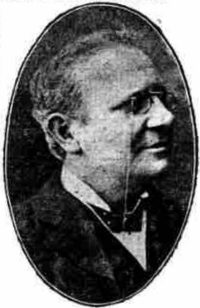
THE HON SECRETARY OF THE FOTHERINGHAY CASTLE STONE PRESERVATION FUND THROUGH WHOSE INITIATIVE THE DISCOVERY WAS MADE.


